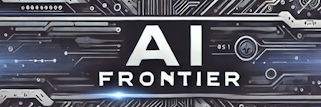Art has always been a realm of human creativity, seen as a sacred space that machines could never penetrate. But with the advent of artificial intelligence and machine learning, the landscape of artistic production is undergoing a radical transformation. The article AI and Machine Creativity: How Artistic Production Is Changing from Wharton, University of Pennsylvania, sheds light on this fascinating intersection of art, creativity, and AI. This blog post will explore the key insights from the article, and delve into the implications of this groundbreaking change in the world of art and creativity.
The Role of AI in Artistic Creation
AI’s involvement in artistic creation is not just about machines generating art. It is about machines learning from the patterns, styles, and nuances of human art and then creating something unique that reflects these learnings. This involves two major aspects:
- Pattern Recognition: AI algorithms are excellent at identifying patterns in data. In the context of art, this could mean recognising styles, techniques, and themes from a vast amount of artistic works.
- Generation of New Outputs: Once AI recognises and learns these patterns, it can generate new outputs that are influenced by its learnings but are not mere copies.
For example, AI has been used to create new paintings in the style of famous artists or to develop original pieces of music based on specific genres or composers. This shows that AI is not just replicating human art, but also contributing to its evolution by producing new, original works.
AI as a Collaborator in Art
Another key point the article makes is that AI is increasingly seen as a collaborator, rather than a competitor, to human artists. This is a significant shift in perspective that has profound implications for the future of art. The collaboration between human creativity and machine learning can lead to unprecedented artistic expressions.
- Augmenting Human Creativity: AI can be used as a tool to augment human creativity, offering new ways of creating art and pushing the boundaries of what’s possible.
- Enhancing Accessibility: AI can make the process of creating art more accessible to people who may not have traditional artistic skills.
Artists who embrace AI as a collaborator can explore new forms of expression, pushing the boundaries of their creativity and enabling them to create works that were previously unimaginable.
Controversies Surrounding AI in Art
Despite the exciting possibilities AI brings to the art world, it’s not without controversy. Some of the concerns raised include:
- Authenticity: Questions about the authenticity of AI art arise. If an AI algorithm creates a piece of art based on patterns it has learned from human art, is the resulting work truly original or merely an imitation?
- Credit and Ownership: Who owns the copyright for AI-generated art? Is it the developer of the AI, the user who provided the input data, or the AI itself? This is a complex legal issue that still needs to be resolved.
These controversies highlight the complexities of integrating AI into the art world, and the need for ongoing dialogue and regulation to address these issues.
The Future of AI and Art
Looking ahead, the article suggests that AI will continue to play a significant role in the world of art. This includes:
- Increased Collaboration: We can expect to see more collaborations between artists and AI, leading to the creation of innovative and unique works of art.
- New Art Forms: As AI continues to evolve, it may give rise to entirely new forms of art that we can’t even imagine today.
Ultimately, the integration of AI into the world of art offers exciting possibilities for artistic expression and innovation. However, it also raises important questions about authenticity, credit, and ownership that need to be addressed.
Conclusion
Artificial Intelligence is transforming the world of art and creativity, expanding the possibilities for artistic expression and challenging our notions of what art can be. As AI continues to evolve and learn, it’s not just replicating human art, but also contributing to its evolution by producing original works. Yet, this new era of machine creativity is not without controversy, raising questions about authenticity and ownership that need to be addressed. Regardless, the future of art will undoubtedly be shaped by the intersection of human creativity and machine learning, promising a fascinating journey ahead.
For more insights on AI’s impact on different sectors, check out our other blog posts on AI in Healthcare and AI in Retail.
For further reading, check out this comprehensive study on AI in Art from the MIT News.
